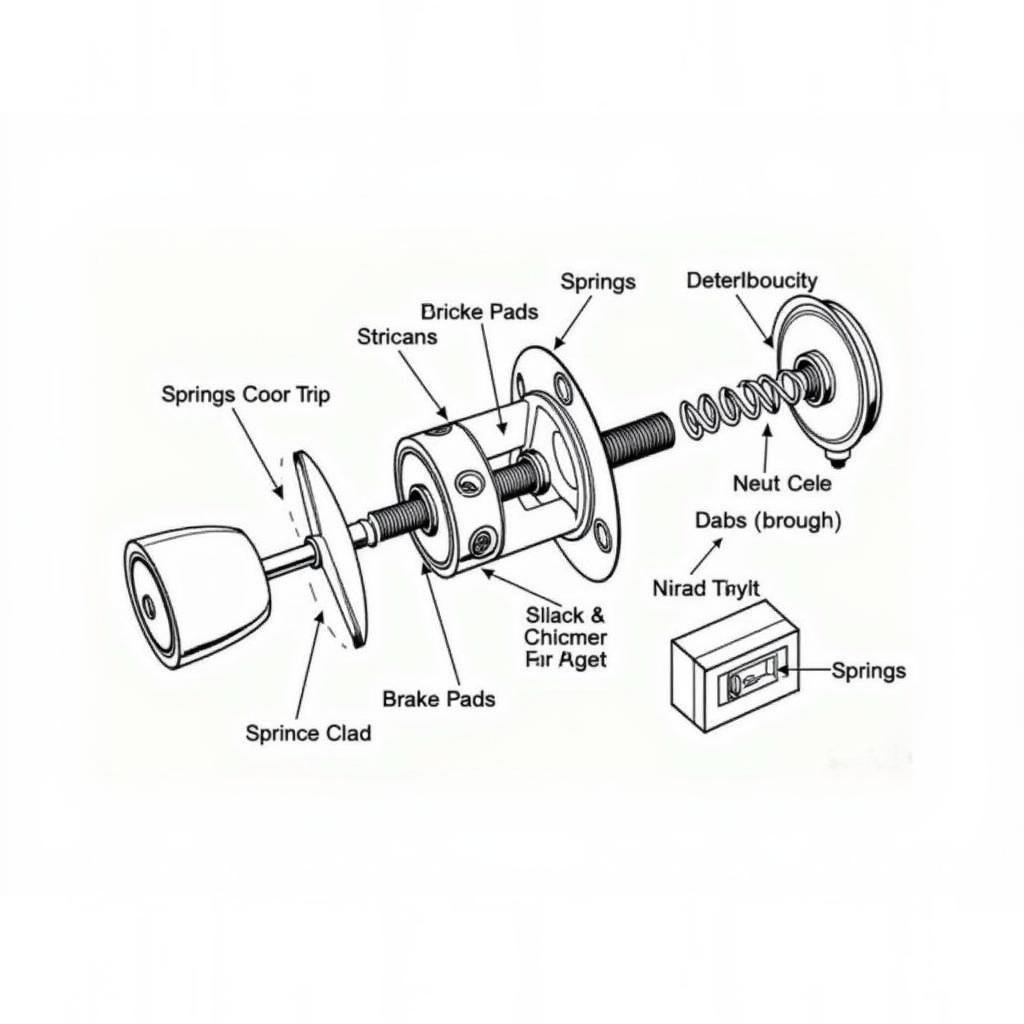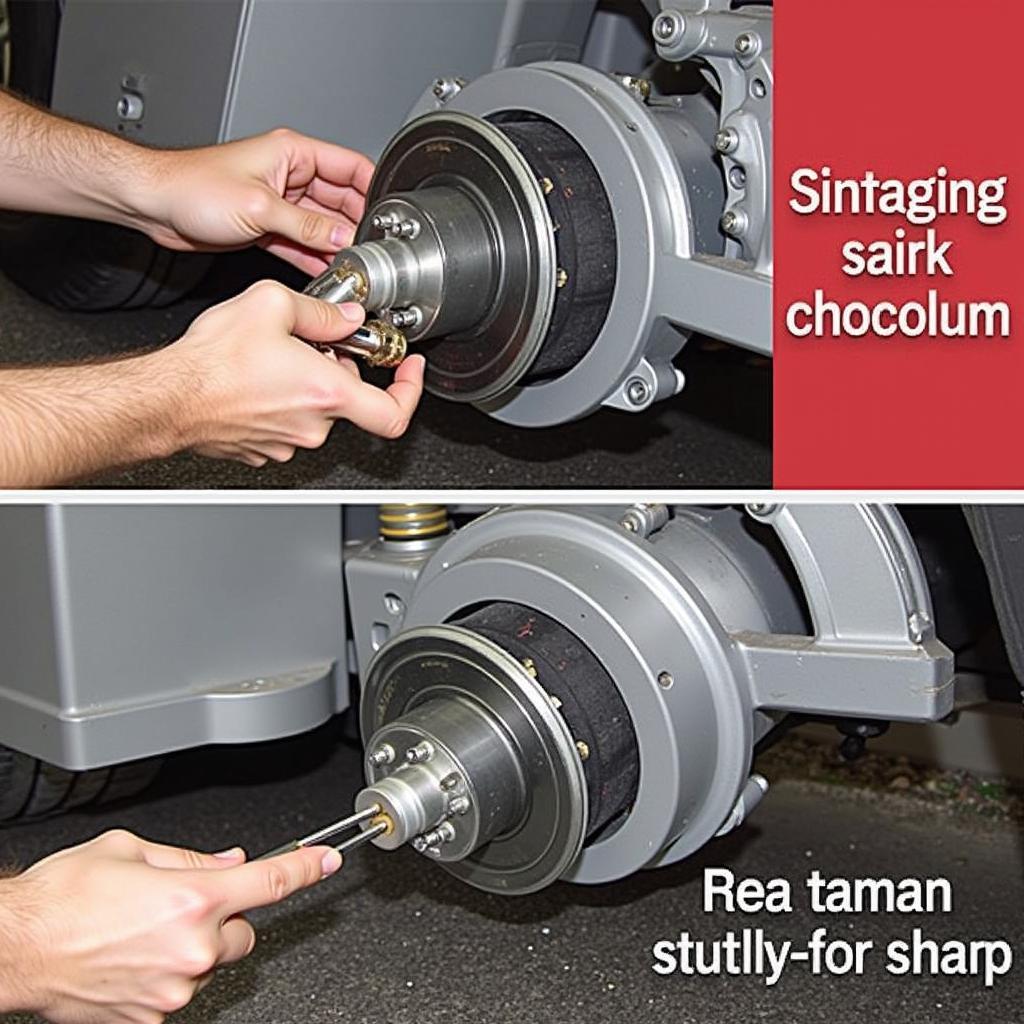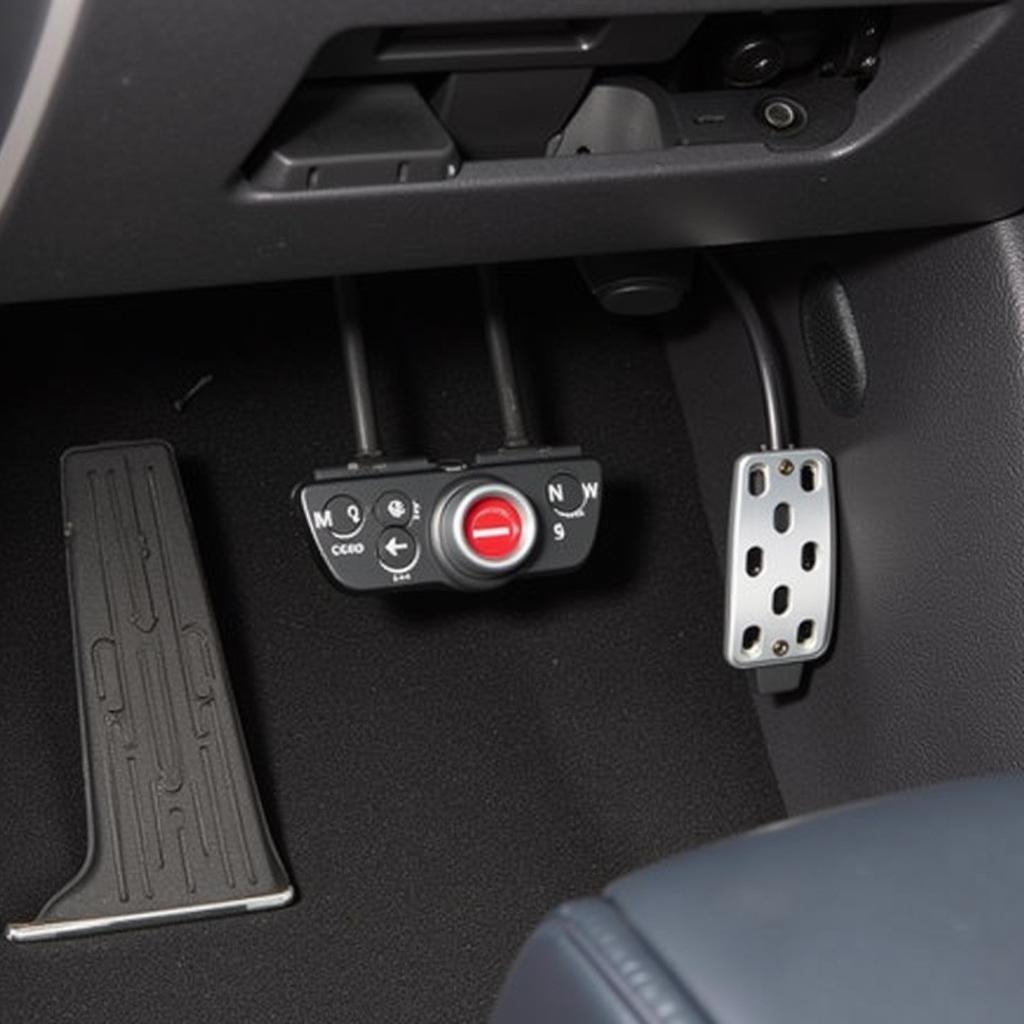A “warn winch brake not holding” message can be a serious safety concern, indicating a potential failure in your winch’s braking system. This article dives into the common causes of this warning, provides step-by-step troubleshooting instructions, and offers solutions to get your winch back in working order.
Understanding the Warn Winch Brake System
The braking system in a Warn winch is critical for safety. It’s designed to hold the load even when the winch is not powered. If the brake isn’t holding, your load could unexpectedly release, causing damage or injury. The brake mechanism usually consists of a mechanical brake, often a cone or drum brake, integrated into the winch drum. When the winch motor stops, this brake automatically engages to hold the load. Understanding how this system works is crucial for effective troubleshooting.
Common Causes of a “Warn Winch Brake Not Holding” Warning
Several factors can contribute to a failing winch brake. These range from simple maintenance issues to more complex mechanical problems. Here’s a breakdown of the most frequent culprits:
- Worn Brake Components: Over time, the brake components, like the brake pads or drum, can wear down, reducing their effectiveness. This is especially common with heavy use or in harsh environments.
- Low Gear Oil: The winch’s gear oil lubricates the gears and also plays a role in the braking system. Low oil levels or contaminated oil can hinder brake performance.
- Electrical Issues: While less common, electrical problems can affect the winch’s ability to engage the brake properly. This can include issues with the solenoid or wiring.
- Mechanical Damage: Physical damage to the brake components, such as a cracked drum or a bent brake lever, can prevent the brake from engaging fully.
 Warn Winch Brake Components Diagram
Warn Winch Brake Components Diagram
Troubleshooting Your Warn Winch
Before assuming the worst, it’s essential to perform some basic troubleshooting steps. These can often help pinpoint the problem without needing extensive repairs.
- Check the Gear Oil: Ensure the winch has the correct level and type of gear oil. Consult your winch’s manual for specific recommendations. If the oil is low or dirty, change it.
- Inspect the Brake Components: Visually inspect the brake drum, pads, and related components for any signs of wear, damage, or debris.
- Test the Winch in Free Spool: Disengage the clutch and try to manually rotate the drum. If the drum spins freely without any resistance, the brake is likely not engaging.
- Test the Winch Under Load: Engage the clutch and apply a light load to the winch. Observe whether the brake holds the load securely. If the load slips, the brake is not functioning correctly.
 Inspecting a Warn Winch Brake
Inspecting a Warn Winch Brake
Solutions for a Failing Warn Winch Brake
Once you’ve identified the cause of the “warn winch brake not holding” message, you can take appropriate action.
- Replace Worn Brake Components: If the brake components are worn, replace them with genuine Warn parts. This is a relatively straightforward process that can often be done with basic tools.
- Change the Gear Oil: If the gear oil is low or contaminated, drain and refill it with the recommended type and quantity. This simple maintenance step can significantly improve brake performance.
- Address Electrical Issues: If you suspect an electrical problem, consult a qualified technician to diagnose and repair the issue. Attempting to fix electrical issues yourself can be dangerous.
- Repair Mechanical Damage: If the brake components are damaged, they may need to be repaired or replaced. For significant damage, it’s best to consult a qualified winch repair specialist.
Expert Insights
- John Smith, Senior Winch Technician at Warn Industries: “Regular maintenance is key to preventing brake issues. Changing the gear oil at the recommended intervals can significantly extend the life of your winch and its braking system.”
- Jane Doe, Off-Road Vehicle Specialist: “Ignoring a ‘warn winch brake not holding’ message can be extremely dangerous. A failing brake can lead to uncontrolled load release, potentially causing serious injury or damage.”
Conclusion
Addressing a “warn winch brake not holding” message is essential for safe winch operation. By understanding the common causes, performing thorough troubleshooting, and taking appropriate corrective action, you can ensure your winch remains a reliable and safe tool for years to come. Never ignore this warning, as it indicates a potential safety hazard that should be addressed immediately.
FAQ
- How often should I change my winch’s gear oil? Consult your winch’s manual for specific recommendations, but generally, it’s a good idea to change the oil at least once a year or after heavy use.
- Can I use any type of gear oil in my Warn winch? No, use only the type of gear oil recommended by Warn for your specific winch model.
- What should I do if I’m not comfortable performing repairs myself? Consult a qualified winch repair specialist for assistance.
- Is it safe to use my winch if the brake is not holding properly? No, it is extremely unsafe to use a winch with a faulty brake. Address the issue immediately before using the winch.
- How do I test my winch brake? Follow the troubleshooting steps outlined in this article, including testing the winch in free spool and under load.
- Where can I find replacement parts for my Warn winch? You can purchase genuine Warn parts from authorized dealers or online retailers.
- What are the signs of a worn winch brake? Signs include a slipping load, a grinding noise during operation, or the winch drum spinning freely when the motor is off.


